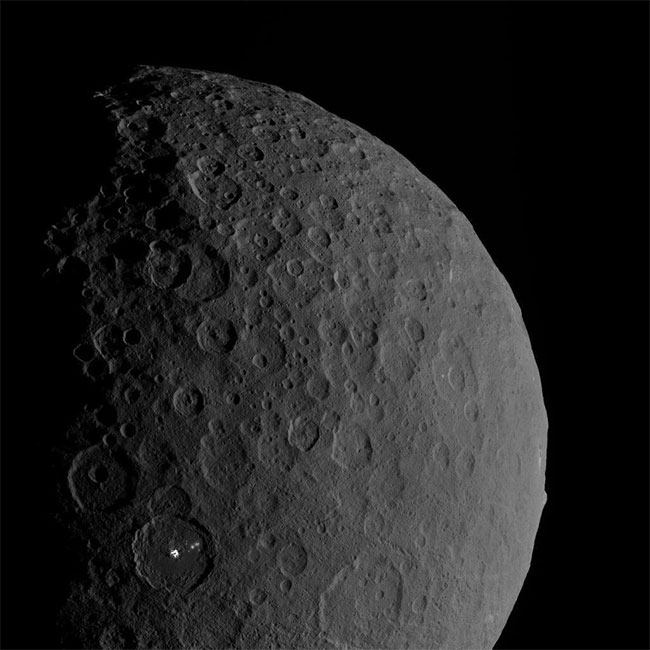Discover ancient ice volcanic shock around the dwarf planet
Dozens of ancient ice volcanoes once scattered on the surface of the dwarf planet Ceres, estimating the amount of ice material emitted from these volcanoes in amounts of less than 100 to 100,000 times , compared to the total amount of molten rock broke out on Earth.

As can be seen, these glacial volcanoes average an average of 16-86km.(Image source: Phys).
Unlike volcanoes that emit a lot of molten lava on Earth, volcanic ice on Ceres dwarf planet also known as cryovolcanoe specializes in spraying ice blocks and other frozen molecules into the surrounding environment.
Scientists at NASA have identified 22 traces of volcanic cryovolcanoe that appear scattered across the surface of the dwarf planet Ceres.
Analyzing the traces on the dwarf planet's surface, it can be seen that these glacial volcanoes average an average of 16-86 km, 1.1-4.4 km high and all existed millions of years ago. ago.
Estimate the amount of ice material emitted from these volcanoes in amounts of less than 100 to 100,000 times, compared to the total amount of molten rock that erupted on Earth, Moon, Venus or Mars.
- Take photos of mountains on the dwarf planet closest to Earth
- Discover new dwarf planets in the Solar System
- Stunned to discover a new dwarf planet in the Solar System
- Detecting Goblin dwarf planet redefines the Solar System
- Revealing a new dwarf planet right in the Solar System
- Discover the astonishment of the planet's formation
- The new discovery of Ceres dwarf planet is shocking
- New set of photos about the dwarf planet Makemake
- The dwarf planet has a belt that resembles Saturn in the solar system
- Your planet is closest to Earth
- Newly stunned detection on dwarf planet Ceres
- Scientific research on the mission to discover Pluto
 Van Allen's belt and evidence that the Apollo 11 mission to the Moon was myth
Van Allen's belt and evidence that the Apollo 11 mission to the Moon was myth The levels of civilization in the universe (Kardashev scale)
The levels of civilization in the universe (Kardashev scale) Today Mars, the sun and the Earth are aligned
Today Mars, the sun and the Earth are aligned The Amazon owner announced a secret plan to build a space base for thousands of people
The Amazon owner announced a secret plan to build a space base for thousands of people